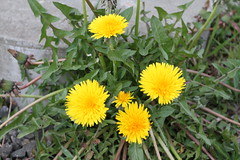Even if you've been gardening for a while, it isn't all that surprising if you've never heard of "indicator plants." The study and use of these plants is still relatively new, and so far they are being utilized more in commercial operations than in people's gardens. But they might actually be helpful to you as well, in planning what sorts of plants you can grow in the soil of your own organic garden, and in keeping ahead of potential pests and infestations.
So first of all, just what are these plants, and what exactly do they indicate? There are a couple of different types of indicator plants, that perform slightly differently but serve similar purposes.
First, there is the kind of plant that's actually closer to a weed, that grows only in certain types of soil or in the presence of specific minerals or nutrients. Things like dandelions can hint at clay soil, for example. Or certain attributes of the leaves or size of other plants show the presence of minerals or other things in the soil. Clues like this have been used throughout history to show where to find specific minerals. One such hint has been white patches on the leaves of plants, which often means there are deposits of nickel or cobalt below; some North American mines have actually begun when plants with these attributes were found growing on the surface.
So if you find certain types of weed growing in your garden, you may be able to conclude that you have the type of soil that would support them. Though spotting just one of these plants may be mere chance. However, encountering two of them – say, the dandelion mentioned above, along with chicory, which also needs clay soil – would make the "clay soil" conclusion a pretty safe bet.
When you watch for this type of indicator plant, it may reveal why other, more desirable plants are not doing well in the garden, if they need a different type of soil. Or it may help you decide which of your preferred plants to put into the garden if you don't plan to make changes in the soil.
Another type of indicator plant is one that attracts the same sort of pests as your more valuable plants. These are especially useful if you're growing a high volume of a specific flower or vegetable. You can't inspect all of them to see if they've got mites, mealy bugs, and so on. But if you have another smaller set of plants nearby that attract the same sorts of pests as these, you can keep watch on them. If they become infested, then you know the larger plant population is in danger too. This can help you discover a problem with pests sooner, so you can take action much earlier to minimize the damage or even to save the other plants from a possibly fatal infestation.
Which types of indicator plants will reveal which specific problems is something you'll need to research yourself, because it will depend on the type of soil your garden has, and what types of plants you hope to put in the garden. But if you're looking for an early warning system for possible insects or soil problems, this type of plant may be a means of providing it for you.



No comments:
Post a Comment